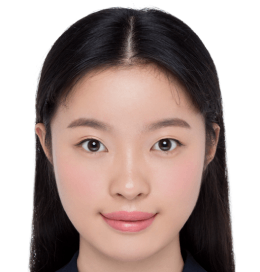
EDUCATION
2023.9- Ph.D. Shanghai Jiao Tong University School of Medicine, Shanghai China
2019.9-2022.6 M.D. Shanghai Jiao Tong University School of Medicine, Shanghai China
2014.9-2019.6 Shanghai Jiao Tong University School of Medicine, Shanghai China
PUBLICATIONS
[1] QianYu Ma#, YaTing Yang#, ZongAn Chen, ChunHui Xie, WenBo Wang, Xiang Lin, LingLing Xia, Qiong Zhao, Zhen Gao*, XiaoLi Wu*. Laser combined with radiotherapy for keloid treatment: a novel and efficient comprehensive therapy with a lower recurrence rate. Plast Reconstr Surg. Accepted. 2021 IF: 5.169. First author. SCI.
[2] Won Taeho#, Ma Qianyu#, Chen Zongan, Gao Zhen*, Wu Xiaoli*, Zhang Ruhong*.The efficacy and safety of low-energy carbon dioxide fractional laser use in the treatment of early-stage pediatric hypertrophic scars: A prospective, randomized, split-scar study[J]. Lasers Surg Med. 2022 Feb;54(2):230-236. 2021 IF: 4.025 Co-first author. SCI.
Abstract submitted for the 5th International Keloid Symposium
BACKGROUND: Keloid is a kind of benign skin fibroproliferative disease with a high recurrence risk. At present, comprehensive therapy is commonly used in treatment, but the high recurrence rate is still an urgent problem to solve. Moreover, the existing comprehensive treatment methods also have various problems, such as high cost, complex process, multiple side effects and so on.
METHODS: 99 patients with keloids who received ablative fractional carbon dioxide laser combined with radiotherapy (LCR) from February 2018 to November 2019 were studied and analyzed retrospectively. The LCR treatment was composed of one session of ablative fractional CO2 laser and two sessions of electron beam irradiation. The patient received ablative fractional CO2 laser first with an energy range of 360-1008mj. Radiotherapy was performed with 6MeV electron beam secondly. The first pass was completed within 24 hours after laser therapy, and the second pass was completed on the 7th day after that. 9Gy energy was used for radiotherapy. The efficacy was evaluated by Patient and Observer Scar Assessment Scale (POSAS) before treatment and 6, 12 and 18 months after treatment. At the same time, the recurrence, side effects and satisfaction with the results were evaluated by online questionnaire.
RESULTS: The total POSAS scores at 18 months follow-up was significantly lower than that before treatment (31.3 ± 11.0 vs 61.5 ± 13.7, P < 0.0001). During the follow-up period, 12.1% of the patients had recurrence, of which 11.1% had partial recurrence and 1.0% had complete recurrence. The overall satisfaction rate was 97.0%. No serious adverse reactions were observed during follow-up.

